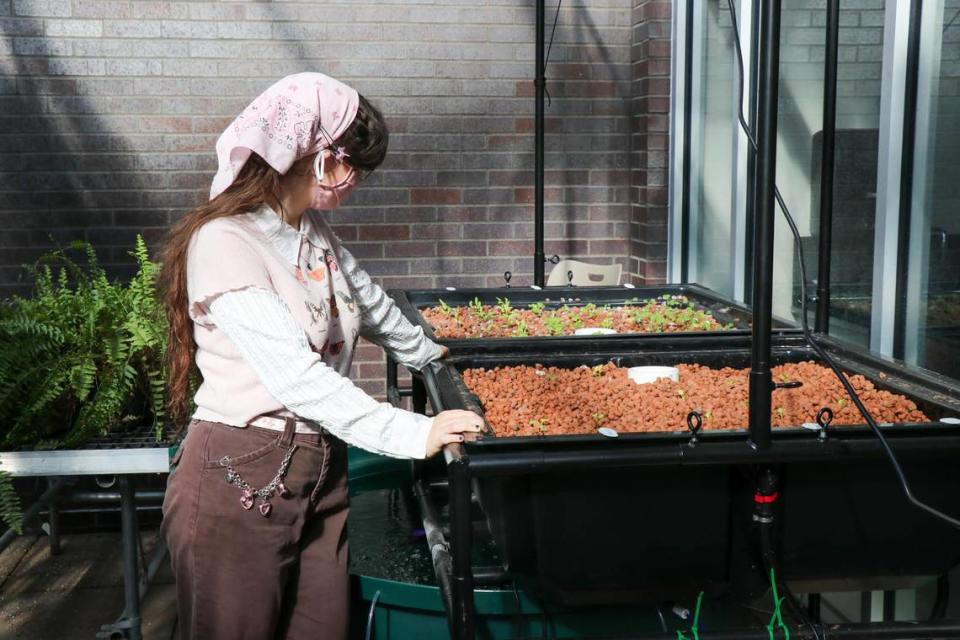A hands-on program at this Johnson County high school focuses on green technology
Olathe West High School is a case study in how to integrate green technology with a school’s building — and its curriculum. A recent report from the European Training Foundation took an in-depth look at the school’s efforts as part of the district’s Green Tech Academy.
The European union agency, based in Italy, focuses on policies relating to education and employment.
The report took note of the hands-on learning opportunities for students, praising its “problem-based learning and the integration of available facilities and technologies into educational activities, coupled with close collaboration with industry partners that actively contribute to and support the programme.”
It’s a point of pride for the school, which opened its doors in 2017. Not every student at Olathe West is part of the academy program, but those who are choose to focus on either energy or agricultural science.
“We’re preparing kids for the green transition that will take place over the next couple of decades, not only in the United States, but also the world,” said Andrew Miller, academy facilitator.
Miller said activities like building an electric car at the school inspired European Training Foundation correspondent Andreas Bjerre Lunkeit to include Olathe West in his international report.
Other schools featured in case studies within the report were located in Denmark, Morocco, Australia and Singapore. Miller said those schools were more like American junior colleges than high schools.
Bjerre Lunkeit visited the school last October to observe and interview students, faculty members, administrators and community business partners about the program. In the report, he outlined how the academy is organized, what it teaches, the types of learning experiences and facilities available, and how it motivates students.
Another key part of the study considered how the academy’s curriculum prepares students for careers in related fields. Jobs students could attain after college include civil engineer, urban planner, ecologist or soil scientist.

The report noted the program’s strong ties with the local business community through an advisory board, field trips and internships.
Miller said he was proud of how the students Bjerre Lunkeit interviewed represented themselves.
“They’re 14 to 18 years old, and they’re speaking and communicating as if they’ve been doing this job for 10 to 15 years. Students are so excited about what they’re learning about that they just are ready to talk about it,” Miller said.
Miller was surprised by the report’s depth in providing background information on vocational education in the United States. He also got a few ideas from the process, like adding more to the curriculum about decarbonization.
Program officials abroad hoping to establish features similar to those at the academy have been in touch with Miller as a result of the case study.
Local feedback to the report has also been positive.
“We love having our kids highlighted,” Miller said. “I’ve had a couple of people reach out to come out and work with our kids, and I think that is awesome.
“Anytime we can get community members to focus in with our kids is awesome and very worthwhile.”

